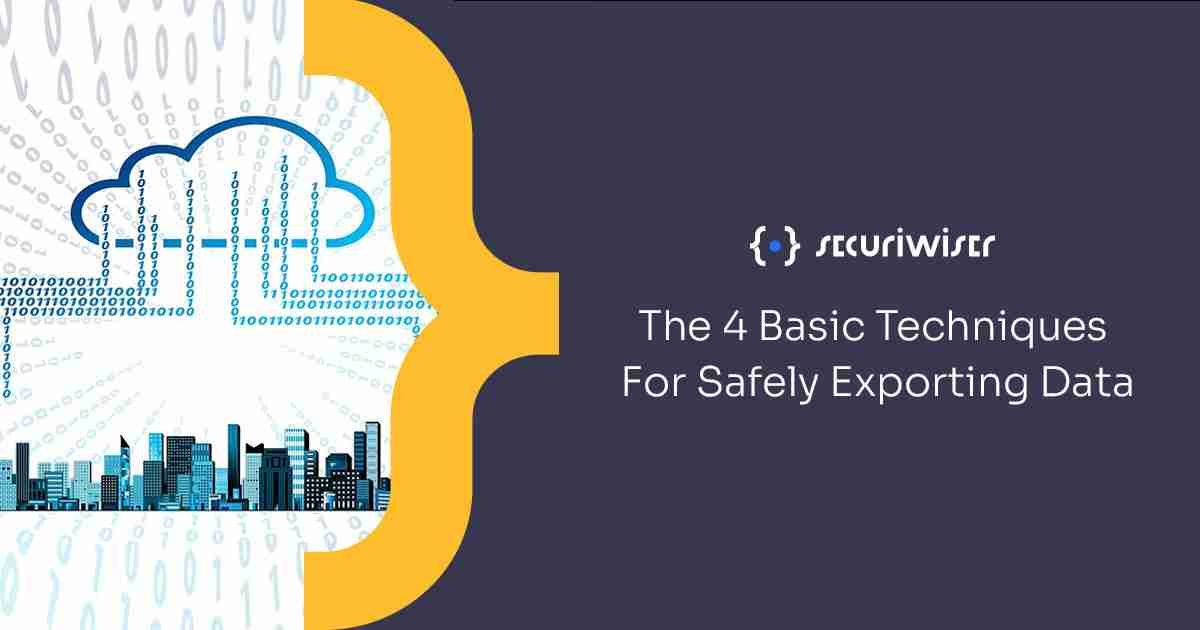The 4 Basic Techniques For Safely Exporting Data
Blog / The 4 Basic Techniques For Safely Exporting Data
3 MIN READ


The large majority of organisations require exportation of data between external organisations. Doing so whilst minimising the likelihood of a data breach can be difficult.
This article outlines the four basic techniques that you can, as a business leader combine to maintain the security of your core networks and systems while your organisation exports data.
- Monitoring and controlling the distribution of information
If appropriate controls are not properly implemented, data that should only be accessible within your organisation may accidentally or intentionally be exported. Depending on the data, this could cause your organisation to receive a bad reputation.
In order to counter this, you will need to establish an authorisation policy to help you decide which data can be shared outside your organisation.
When forming your policy, you should take into account:
- The type of information which is more valuable and sensitive.
- The source of the information.
- The trustworthiness of the recipient, their IT system and their method of data handling. You may need organise an agreement with the recipient regarding how they will protect the data.
- If the user or the system part of an automated process is authenticated.
- If an additional person needs to be involved to authorise the release of data. This can include another employee, a manager or the data owner.
- A classification system to mark data that is too sensitive� to be distributed.
- A volume limit of how much data can be exported. If more information is shared, this could indicate that a data breach has taken place.
Once your policy has been established, you will need to decide which policy you will enforce using technology and how much you will need to rely on your employee’s conduct. In some cases, overly strict technical controls may block information that is fine to share.
- Preventing the risk of hidden data being shared
Modern files can be arranged along a various range of complexities and can be embedded with many distinct fields and variables. A lot of the time, this information remains concealed from the user, leading to a chance of a data breach.
When a file is exported from your network, that file may contain obscured data that the user or sender is unaware of. This data could comprise sensitive business data. For example, track changes, comments, undo history or author details. Release of this data could cause a significant data breach.
To prevent a data breach such as this:
- Documents should be checked for hidden data that needs to be taken out.
- Document format can be changed to another file to remove some of the hidden data.
Whilst enforcing these methods, keep in mind that in some cases, users may need to share documents embedded with certain functionality such as track changes.
- Defending against network attacks
Network attacks can be committed by threat actors using command-and-control, malwares and more.
The two ways threat actors can use export channels to commit a network attack:
- By using it as a route to carry out the first intrusion.
- By using it to steal data or to execute command-and-control after a prior successful intrusion attempt.
Defence methods against network attacks:
- Use data diodes so transmissions can only be one-way. This will prevent threat actors from being able to reach internal components.
- Only provide authorisation to export channels to block unauthorised internal systems or unauthorised users from using it.
- Make sure that the request came from a human and not a malware.
- Data encryption
Data transmissions can be kept safe using encryption so threat actors cannot access the data.
Techniques for encrypting data include:
- Data-in-transit encryption – which will encrypt the channel used to transmit the data.
- Object encryption – which will encrypt the item individually for the receiver.
For many cases, it is sufficient to opt for the data-in-transit method however, for cases where the risk is higher, it is better to choose object encryption. In this case, if a threat actor managed to access the data, they will not be able to use it.
About Securiwiser
We aim to provide our clients advice concerning implementation of various specific cyber security methods, some of which will be more suitable than others depending on the business type to help ensure the cyber health of our client’s system.
We advise our clients (whether they are individual users or business owners) regarding various cyber threats that their businesses and operating systems may face. This includes increasing trends of certain threats and prevention methods that are cost effective and time saving.
Furthermore, business owners, employees and general users may forget to conduct regular scans to monitor the health of their operating system, which criminals can take advantage of to gain unauthorised access by exploiting unrecognised, underlying vulnerabilities.
Securiwiser can conduct regular scans for your system and provide a detailed cybersecurity risk assessment and a cybersecurity vulnerability assessment. We can further explain detected vulnerabilities and risks in detail to our clients and provide the best course of action that will save your business time and money.
Previous Article
Understanding Polymorphic VirusesHow secure is
your business?
Blog categories
How secure is
your business?